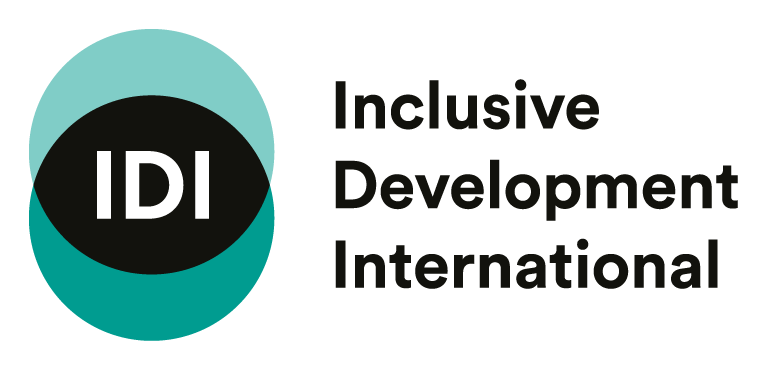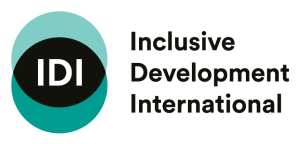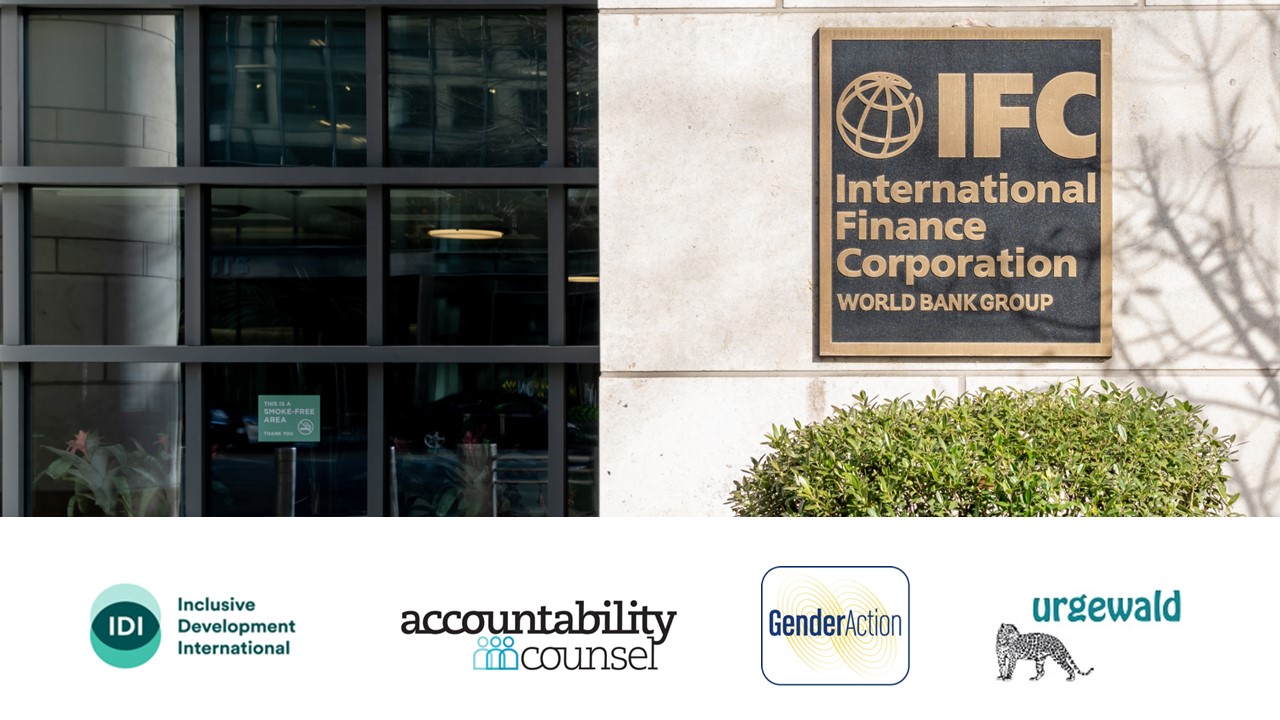On this International Women’s Day, the International Finance Corporation (IFC) is asking its Executive Directors to endorse an inadequate and flawed Management Action Plan (MAP) in response to the Compliance Advisor Ombudsman’s (CAO) investigation of child sexual abuse at Bridge International schools in Kenya. Executive Directors should reject the proposed MAP.
The facts are clear. IFC supported a reckless educational experiment on African children, financing Bridge to rapidly expand their private school network in Kenya and beyond. Yet, IFC failed to conduct due diligence required by its own policies to make sure the schools were safe. Bridge employed sexual predators. Bridge students were abused and suffered long-term harm. Even after multiple cases of abuse were brought to IFC’s attention, IFC did nothing to ensure that these children received redress. Instead, IFC colluded with Bridge to delay the CAO investigation and cover up the allegations of abuse, lest these “spook” new investors.
Now, IFC is dismissing CAO’s recommendation that the MAP include financial compensation for the Bridge survivors on a no-fault basis. Instead, IFC proposes a non-targeted “collective response” to support programs for any survivor of child sexual abuse in Kenya––a development project that IFC has no demonstrated expertise to implement. IFC claims that this response, of undefined scope and cost, is consistent with “global good practice.” It isn’t. While the goal of supporting child abuse service providers in Kenya is laudable, it is not responsive to the specific harms the CAO unearthed. IFC’s MAP fails to do the one thing that is required of it: provide remedy to the Bridge survivors.
In January, eleven World Bank Group Executive Directors, representing 103 countries and over half the total shareholding of the IFC, issued a joint statement recognizing the obvious shortcomings of IFC’s proposed MAP. The joint statement said that IFC should not exclude any form of financial support or compensation suggested by CAO until IFC engaged in additional consultations, including with the Bridge survivors. This was the right position and we applaud the Executive Directors for sending the MAP for revision.
However, IFC didn’t listen to the Executive Directors and in an updated MAP, refuses to acknowledge that it would consider providing financial support or compensation for harm to sexual abuse victims if proper consultations reveal this to be an appropriate remedy. Instead, IFC remains focused on increasing access to a yet-to-be-decided service program by paying for transportation or other costs stemming from accessing care. There is no guarantee that any Bridge survivors will benefit at all from the proposed program
So here is what we have: a MAP developed in Washington, without consultation, without a budget, and which is not tailored to the needs of the Bridge survivors. That is not global good practice. It is a global embarrassment that signals the moral bankruptcy of the IFC’s leadership. We ask Executive Directors to not waver on their January position. The option of meaningful financial support for the Bridge survivors must remain on the table pending consultations with them.
Further, we urge Executive Directors not to approve this MAP on an absence of objection basis. Every MAP in response to a CAO investigation–and especially a case involving impacts of this gravity–should be the subject of a formal Board discussion and, if the conditions of your January statement are not met, as is currently the case, we ask that you oppose the MAP.
For more information on best international practices for remediation of child sexual abuse in schools and other care facilities, see our Frequently Asking Questions below.
Margaux Day, Executive Director
Accountability Counsel
Elaine Zuckerman, Executive Director
GenderAction
David Pred, Executive Director
Inclusive Development International
Dustin Schäfer, Head of IFI Team
urgewald e.V.
Frequently Asked Questions on Good Practice for Compensation as Part of Remedy for Sexual Abuse
International law and globally established practice demonstrate that a “survivor centered” and “rights based” approach to addressing the impacts of child sexual abuse must be grounded in consultation withsurvivors and include scope for financial compensation as part of a broader approach to remedy. Thebelow questions and answers provide examples of international guidance and established practice.
Q: What does international law have to say on this topic?
A: Remedy may include a range of measures to address harm. Compensation is ordinarily a component of remedy, and there is no exception for victims of sexual abuse.
- The UN Basic Principles and Guidelines on the Right to a Remedy and Reparation for Victims of Gross Violations of International Human Rights Law and Serious Violations of International Humanitarian Law(General Assembly resolution 60/147 (2005)) recognize “restitution, compensation, rehabilitation, satisfaction and guarantees of non-repetition” as components of effective reparation for victims of human rights abuses (para. 18).
- The UN Convention on the Rights of the Child requires that in cases where the rights of children are breached “there should be appropriate reparation, including compensation, and, where needed, measures to promote physical and psychological recovery, rehabilitation and reintegration … .”1
- The UN Convention on the Elimination of All Forms of Discrimination against Women (CEDAW) recognizes the need for “effective reparations to victims/survivors of gender-based violence” including “measures, such as monetary compensation, the provision of legal, social and health services, including sexual, reproductive and mental health services for a complete recovery.”2
- The UN Guiding Principles on Business and Human Rights, which are referenced in IFC’s Sustainability Framework and the CAO Policy, state that: “Remedy may include apologies, restitution, rehabilitation, financial or non-financial compensation and punitive sanctions (whether criminal or administrative, such as fines), as well as the prevention of harm through, for example, injunctions or guarantees of non-repetition” (para. 25).
- The African Commission on Human and People’s Rights Resolution on the Right to a Remedy and Reparation for Women and Girls Victims of Sexual Violence calls upon parties to “Put in place efficient and accessible reparation programmes that ensure information, rehabilitation and compensation for victims of sexual violence.”3
Q: What are global practice examples of compensation as part of remedy for sexual abuse?
A: There are many. Examples include:
- In a decision from this year, the International Criminal Court in the Hague ordered a reparations scheme in Uganda for victims of conflict related sexual and gender-based crimes. The order included financial redress payments for victims with the support of the ICC’s Trust Fund for Victims, a special trust fund of the court that is designed to support reparations for victims of cases prosecuted before the ICC.
- In Peru, reparations for survivors of sexual abused during the country’s civil war included compensation.4
- In 2016, the Extraordinary African Chambers awarded compensation to survivors of sexual violence at the hands of the Habré regime in Chad.5
- In 2013, in response to sexual abuse of community members on a mine site in Papua New Guinea, the Canadian mining company Barrick designed a “Remedy Framework” that included both individual reparations payments and community-wide projects.
- Even some of the World Bank Group’s own documents endorse compensation in response to people who have suffered sexual exploitation and abuse.6
Q: What are global good practice examples for addressing abuse of children in care settings?
- In January 2024, the Council of Europe (Parliamentary Assembly) approved a resolution calling for all member states to provide full reparation for violence committed against children (including sexual abuse) in institutions based on the Swiss model including “adequate compensation that is proportionate to the gravity of the harm done” (see para. 7.7).7
- In December 2021, the Scottish government established Redress Scotland. Redress Scotland can provide payments, apologies and psychosocial support for survivors of abuse in government and non-government care settings.8
- In July 2018, Australia established the Australian National Redress Scheme. The National Redress Scheme can provide survivors of child sexual abuse in institutions, educational and other care settings with access to remedies including financial compensation, counselling and personal apologies.9
- In the USA, various dioceses and archdioceses of the Catholic church have established“ Independent Reconciliation and Compensation Programs” which provide access to compensation for abuse by priests based on a claims process.10
- Similarly, the Church of England is currently in the process of establishing a Redress Scheme which would provide victims of abuse by clergy with “financial payments, therapeutic, spiritual and emotional support, acknowledgment of wrongdoing on the part of the Church, and apology.”11
- In 2000, the Law Commission of Canada produced a report12 outlining a range of needs of survivors of child abuse including: Acknowledgement, access to psychosocial services, financial compensation and education/training. The Commission concluded that “redress programs negotiated with survivors and their communities” are the best official response for addressing past child abuse in care settings, and that “[s]urvivors should have the option of choosing which particular mix of benefits or compensation best meets their needs” (pp.402f).
Q: Is reimbursement of costs equivalent to compensation?
A: No. As defined in the UN Basic Principles and Guidelines on the Right to a Remedy, compensation includes payments in recognition for lost economic opportunities, psychological harm and “moral damage” (para. 20).Reimbursement of costs (such as medical or legal costs) may be required in order to achieve remedy, however, this cannot be conflated with compensation.
Q: Isn’t making cash payments to poor and vulnerable individuals problematic? Won’t this risk doing more harm than good?
A: The World Bank and other development agencies support a range of programs that provide cash payments to poor and vulnerable households. While there are risks that need to be managed in relation to such programs, they are generally seen as effective in improving recipients’ wellbeing.13 Programs that provide cash payments directly to women have been found to be particularly effective in improving the well being of women and children, including reducing the vulnerability of women to GBV.14 Cash transfers have also been integrated into GBV programs.15 Lessons learned from the design of cash transfer programs could be adapted to ensure maximum benefit from compensation payments to the Bridge survivors.
Q: Do global good practice examples of redress schemes for child sexual abuse include outreach and awareness functions?
A: Yes. Respecting the right of survivors to self-identify and access redress schemes voluntarily, good practice examples of redress schemes include targeted communications and stakeholder engagement activities to ensure that there is maximum awareness of the scheme among survivors. For example, as part of the National Redress Scheme, the Australian government committed to fund: “a communication strategy to build trust and increase awareness of the Scheme among survivors, including; specific strategies to reach vulnerable people; Aboriginal and Torres Strait Islander people; people with disability; and regional, remote, and culturally and linguistically diverse communities.”16
- Committee on the Rights of the Child, General Comment No. 5 (CRC/GC/2003/527 (2003)), para. V. ↩︎
- CEDAW, General recommendation No. 35 on gender-based violence against women, updating general recommendation No. 19 (CEDAW/C/GC/35 (2017)), para. 33(a). ↩︎
- ACHPR/Res.111 (XXXXII) 07, para. 2. ↩︎
- https://www.theguardian.com/global-development/2012/jun/28/peru-civil-war-victims-sexual-violence ↩︎
- https://www.aljazeera.com/news/2017/4/27/court-upholds-life-sentence-of-chads-hissene-habre ↩︎
- E.g., Working Together to Prevent Sexual Exploitation and Abuse: Recommendations for World Bank Investment Projects (2017) (“In addition to enabling provision of services to survivors, resources may be needed to provide some form of compensation to survivors and/or their families to address lost productivity or income.”). ↩︎
- https://pace.coe.int/en/files/33368/html. ↩︎
- https://www.redress.scot/. ↩︎
- https://www.nationalredress.gov.au/. ↩︎
- FAQs About the Archdiocese of New York’s Independent Reconciliation and Compensation Program (IRCP) | Catholic New York (cny.org). ↩︎
- Redress Scheme | The Church of England. ↩︎
- Law Commission of Canada report (2000) entitled “Restoring Dignity: Responding to Child Abuse in Canadian
Institutions. ↩︎ - What have we learned about cash transfers? (worldbank.org). ↩︎
- Could digital cash transfers help tackle gender-based violence? (worldbank.org). ↩︎
- Integrating cash transfers into gender-based violence programs in Jordan: Benefits, risks and challenges | International Rescue Committee (IRC) ↩︎
- Australian-government-response-second-year-review-national-redress-scheme_0.pdf (nationalredress.gov.au), p.25. ↩︎


